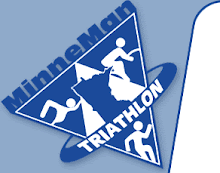
By Tim Walton (Walton Training - Swim & Fitness)
Generally, drafting can be defined as the practice of gaining efficiency by utilizing the water or air currents created by someone or something ahead. There are examples of drafting in both nature and in sports. Geese fly in a V-formation to reduce drag. Dolphins ride wave currents to save energy. Likewise, from motor sports to bicycle racing to open-water swimming, drafting is a skill that people use to improve overall results dramatically. While it is my belief that increasing efficiency through training and improved stroke mechanics is preferred, I would be remiss to ignore the personal advantage and energy saved by drafting. This article will assess the fundamental pros, cons, and how-to’s of drafting in the swimming leg of the triathlon.

While completely legal, drafting can be accomplished by simply swimming directly behind a lead swimmer within 3 ft or at the hip within 2 ft. That said, be careful whom you follow. Are you drafting off someone whose pace you can maintain? Or, are you drafting off someone whose pace is waning? Are you familiar enough with your desired pace so that you can recognize when this is occurring? If so, remember that you can go from draft to draft. In other words, you may find that you need to find a more appropriate “draftee”. This should be done calmly and should stay within your race plan. To make such adjustments, wearing clear goggles is a must, especially in murky water, so you can position yourself correctly.
Properly done, drafting can improve efficiency up to 45%. This may just be the advantage you need. Some of you may remember when the USA Olympic swim relay drafted off of the French team and stormed home for the gold. The USA swimmer took advantage of his second place position, and took the draft. The energy savings allowed the American to charge in the last 15 meters, surpassing the French competitor. Says Jim Wise, former all American swimmer and owner of Elsmore Aquatic, “If you are the lead dog, you are the target”. As a lead swimmer you will need to know your competition, and will need to be aware whether someone is using you to draft. If you are confident that your pace can sustain the lead, you may not care whether someone is drafting. If you know that a competitor can challenge you throughout the swim, you may want to allow someone else to take the lead so that you can build your energy reserves for the other two legs of the race.
Some question the sportsmanship of drafting. As a swimming purist, all efforts to improve swimming through correct mechanics and training are preferred and all other skills and tactics are a bonus. Consider drafting just another tool among many in your arsenal. For example, through the use of a wetsuit a swimmer can artificially improve both body position and buoyancy. Many of the athletes I have worked with can improve times up to 20 seconds per 100 yards using a wetsuit. Over a mile, this can save over 5 minutes in time.
There are some negative consequences of drafting. Although collaborative efforts to block other swimmers are a rare practice in triathlon, it is a possibility. Interfering with the draftee by getting too close, or excessive contact due to sloppy stroke mechanics. If this happens don’t be surprised if the draftee gives you a swift kick on their downbeat kick.
In conclusion, my opinion is to "take what nature gives you." Be fair, respectful, and use drafting as a skill to improve efficiency, something that will allow you to swim, ride and run faster.
Coach Walton can be contacted at tim@waltontraining.com.




































